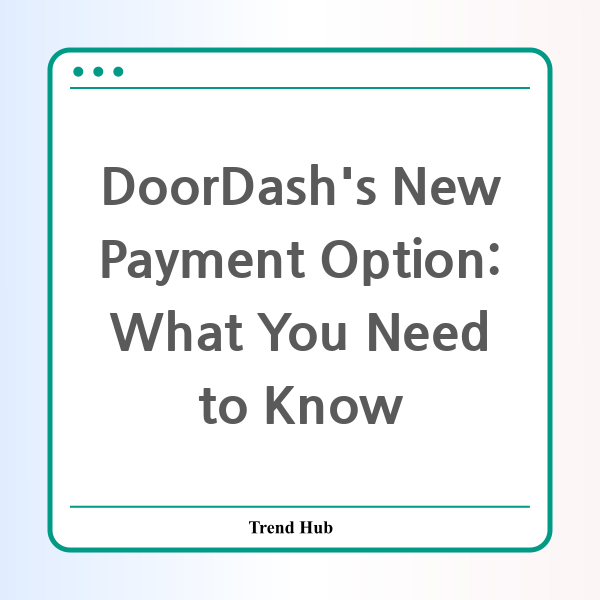* This website participates in the Amazon Affiliate Program and earns from qualifying purchases.

Could Your Fast Food Meal Become a Financial Burden?
Have you ever found yourself craving your favorite meal but hesitating because of the price? You're not alone! With DoorDash now allowing customers to choose a "Buy Now, Pay Later" (BNPL) option through a partnership with Klarna, the convenience of fast food is about to get a whole lot easier—and possibly a bit riskier, too.
The BNPL service lets users spread out their payments into four interest-free installments or push them to align with their paycheck cycles. While this may sound enticing, particularly for younger consumers who are increasingly adopting this payment method, there are rising concerns about the implications of escalating debt levels in the U.S. with a staggering increase in delinquency rates on loans.
Understanding the Costs of Convenience
Imagine you decide to order a $20 burrito through DoorDash. Seems reasonable, right? But when you consider various additional costs like delivery fees, service charges, and tips, that same burrito could end up costing a whopping $70! This kind of sticker shock has many consumers re-evaluating their food delivery choices, especially given the inflationary pressures on operational costs within the food industry.
It’s vital to understand that while the BNPL option might make immediate consumption easier, it could also lead to unintended financial consequences down the road. The convenience of being able to enjoy your meal now and pay later can create a cycle of spending that many might find harder to break free from, ultimately contributing to the rising tide of consumer debt.
The Growing Appeal of BNPL Services
Buy Now, Pay Later services like Klarna are seeing significant growth due to their flexibility and ease of use, particularly appealing to the younger demographic that often prioritizes experiences over immediate financial responsibility. The promise of not having to pay all at once can be particularly alluring for consumers looking to manage their expenses more effectively.
DoorDash's strategy to incorporate Klarna's BNPL service aims not just to enhance customer satisfaction—it's also a calculated move to boost sales. By attracting more users who may have previously hesitated to order due to financial constraints, DoorDash hopes to build a larger customer base that relies on their platform for food delivery.
A Cautionary Tale
While BNPL offers an attractive alternative for many, it's crucial to approach with caution. Consumers need to be aware of their overall financial health and the potential for accumulating debt. With the increasing cost of living and rising prices, one must weigh the benefits of convenience against the real economic impact. Are you ready to enjoy that meal now, or will you consider the future implications of your financial choices?
Final Thoughts
As DoorDash introduces this new payment flexibility, it’s important to examine both the benefits and drawbacks of such a service. Convenience can sometimes come at a cost—financially, emotionally, and in terms of debt. By staying informed and making mindful decisions, consumers can navigate these waters without sinking into debt. So, next time you fire up your DoorDash app, think twice before hitting that 'Order' button!
* This website participates in the Amazon Affiliate Program and earns from qualifying purchases.